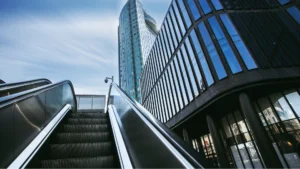Talaan ng mga Nilalaman
I-toggleDesign Elevator Shaft
Designing an elevator shaft requires careful consideration of various factors to ensure a safe and efficient operation. In this comprehensive guide, we will walk you through the key elements of elevator shaft design, highlighting its advantages and the application fields that customers pay attention to.
To begin with, a well-designed elevator shaft optimizes space utilization while ensuring a smooth vertical transportation flow. This is achieved through careful planning of the shaft dimensions, including width, height, and depth. For example, in commercial buildings, where space is often a premium, a compact shaft design is crucial. By utilizing space-saving technologies, such as machine room-less elevators, architects can maximize the usable floor area without compromising on elevator performance.
Furthermore, the materials used in elevator shaft construction significantly impact the overall design. A common choice is reinforced concrete, which provides stability, durability, and fire resistance. By incorporating advanced fireproofing measures, such as fire-rated elevator doors and smoke containment systems, the elevator shaft can effectively prevent the spread of fire, ensuring the safety of both passengers and building occupants.
Another important consideration in elevator shaft design is the integration of key safety features. For instance, designing emergency exit doors within the shaft allows for quick and safe evacuation during unforeseen events. Additionally, the installation of safety devices, like sensors and cameras, enhances passenger security and provides real-time monitoring capabilities. By carefully incorporating these safety measures, architects can create a reliable and secure vertical transportation system.
Moreover, the efficiency of an elevator shaft design can greatly affect energy consumption. Utilizing energy-efficient components, such as regenerative drives and LED lighting, can significantly reduce the environmental impact and operational costs. For instance, regenerative drives capture and convert energy produced during the elevator’s descent, which can then be used to power other systems within the building. This not only reduces electricity consumption but also lowers the building’s carbon footprint.
In terms of application fields, elevator shaft design finds its importance in a wide range of sectors. One prominent field is high-rise buildings, where vertical transportation plays a crucial role. A well-designed shaft ensures efficient transportation of occupants, minimizing waiting times and congestion. In addition, the design of elevator shafts in healthcare facilities is of utmost significance, as it directly impacts patient care. From seamless movement of patients on stretchers to accommodating medical equipment, a well-planned shaft design ensures smooth and safe operations within hospitals and clinics.
Lastly, an article on elevator shaft design would be incomplete without discussing the importance of aesthetics. Elevator shafts, especially those in public spaces, can greatly contribute to the overall visual appeal of a building. Incorporating architectural elements that complement the building’s design and utilizing facade materials that blend seamlessly with the surroundings can create a harmonious and aesthetically pleasing structure.
In conclusion, designing an elevator shaft requires a comprehensive understanding of various factors, including space utilization, materials, safety features, energy efficiency, and application fields. By integrating these elements, architects can create an elevator shaft design that is not only functional and safe but also visually appealing. Elevator shaft design plays a pivotal role in enhancing the efficiency of vertical transportation systems, ensuring the smooth movement of people and goods in a wide range of settings.


